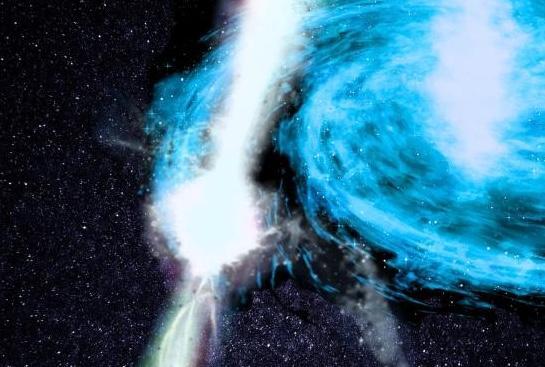
SXP 138 Pulsar Shows Unusual Spin-Down, Reveals New Insights
Be X-ray binary pulsars, such as SXP 138, are some of the most fascinating and extreme cosmic entities in the universe. These systems consist of a neutron star, a massive companion star, and a strong magnetic field. The neutron star’s rotation is synchronized with the binary system’s orbital period, creating a pulsar that emits intense X-ray radiation. Recently, a new study has shed light on the complex dynamics of SXP 138, a Be X-ray binary pulsar, revealing an unusual spin-down process that has puzzled scientists.
The spin-down of a pulsar refers to the gradual decrease in its rotation period due to the emission of electromagnetic radiation. In the case of SXP 138, the spin-down is expected to be a linear process, with the neutron star’s rotation period decreasing steadily over time. However, the new study has found that SXP 138’s spin-down is not linear. Instead, the pulsar’s rotation period is decreasing in a complex, non-linear manner.
This unexpected behavior has sparked significant interest among scientists, as it suggests that the dynamics of SXP 138 are more intricate than previously thought. The study’s authors, led by Dr. Naseem Rangwala, used a combination of timing and spectral properties to investigate the pulsar’s spin-down. By analyzing the X-ray radiation emitted by SXP 138, the team was able to determine the pulsar’s rotation period and its rate of spin-down.
The results of the study are intriguing, as they suggest that the neutron star’s rotation is influenced by its massive companion star. The companion star’s strong gravity and intense radiation can affect the neutron star’s rotation, causing it to slow down more rapidly than expected. This complex interplay between the two stars is responsible for the non-linear spin-down of SXP 138.
Moreover, the study’s findings have implications for our understanding of the relationship between the neutron star and its massive companion. The non-linear spin-down of SXP 138 suggests that the two stars are in a state of mutual interaction, with the companion star’s gravity and radiation influencing the neutron star’s rotation. This interaction is likely to be bidirectional, with the neutron star’s radiation also affecting the companion star’s properties.
The discovery of SXP 138’s unusual spin-down has significant implications for our understanding of these extreme cosmic entities. Be X-ray binary pulsars are rare objects, and the study of their dynamics can provide valuable insights into the physics of these systems. The findings of the study can also be used to refine models of these systems, allowing scientists to better understand the complex interactions between the neutron star and its massive companion.
In conclusion, the study of SXP 138 has revealed new insights into the complex dynamics of Be X-ray binary pulsars. The non-linear spin-down of this pulsar suggests that the relationship between the neutron star and its massive companion is more intricate than previously thought. The findings of this study have significant implications for our understanding of these extreme cosmic entities, and highlight the importance of continued research into the physics of these systems.
News Source:
https://researchmatters.in/news/cosmic-clockwork-going-haywire-x-ray-binary-sxp-138-finds-new-study






